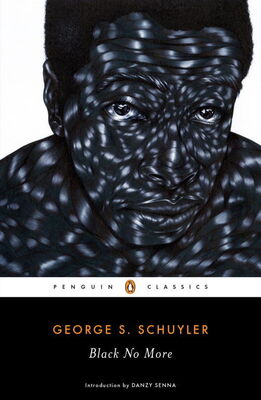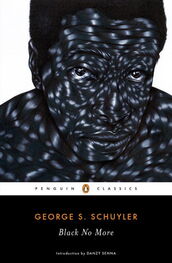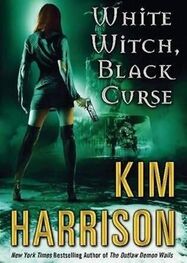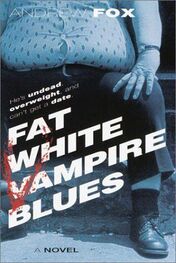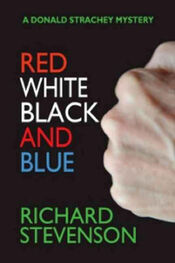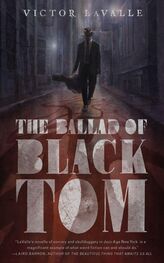When the roasting was over and the embers had cooled, the more adventurous members of Rev. McPhule’s flock rushed to the stake and groped in the two bodies for skeletal souvenirs such as forefingers, toes and teeth. Proudly their pastor looked on. This was the crowning of a life’s ambition. Tomorrow his name would be in every newspaper in the United States. God had indeed answered his prayers. He breathed again his thanks as he thrust his hand into his pocket and felt the soothing touch of the hundred-dollar bill he had extracted from Snobbcraft’s pocket. He was supremely happy.
AND SO ON AND SO ON
In the last days of the Goosie administration, the Surgeon-General of the United States, Dr. Junius Crookman, published a monograph on the differences in skin pigmentation of the real whites and those he had made white by the Black-No-More process. In it he declared, to the consternation of many Americans, that in practically every instance the new Caucasians were from two to three shades lighter than the old Caucasians, and that approximately one-sixth of the population were in the first group. The old Caucasians had never been really white but rather were a pale pink shading down to a sand color and a red. Even when an old Caucasian contracted vitiligo, he pointed out, the skin became much lighter.
To a society that had been taught to venerate whiteness for over three hundred years, this announcement was rather staggering. What was the world coming to, if the blacks were whiter than the whites? Many people in the upper class began to look askance at their very pale complexions. If it were true that extreme whiteness was evidence of the possession of Negro blood, of having once been a member of a pariah class, then surely it were well not to be so white!
Dr. Crookman’s amazing brochure started the entire country to examining shades of skin color again. Sunday magazine supplements carried long articles on the subject from the pens of hack writers who knew nothing whatever of pigmentation. Pale people who did not have blue eyes began to be whispered about. The comic weeklies devoted special numbers to the question that was on everyone’s lips. Senator Bosh of Mississippi, about to run again for office, referred several times to it in the Congressional Record, his remarks interspersed with “Applauses.” A popular song, “Whiter Than White,” was being whistled by the entire nation. Among the working classes, in the next few months, there grew up a certain prejudice against all fellow workers who were exceedingly pale.
The new Caucasians began to grow self-conscious and resent the curious gazes bestowed upon their lily-white countenances in all public places. They wrote indignant letters to the newspapers about the insults and discriminations to which they were increasingly becoming subjected. They protested vehemently against the effort on the part of employers to pay them less and on the part of the management of public institutions to segregate them. A delegation that waited upon President Goosie firmly denounced the social trend and called upon the government to do something about it. The Down-With-White-Prejudice-League was founded by one Karl von Beerde, whom some accused of being the same Doctor Beard who had, as a Negro, once headed the National Social Equality League. Offices were established in the Times Square district of New York and the mails were soon laden with releases attempting to prove that those of exceedingly pale skin were just as good as anybody else and should not, therefore, be oppressed. A Dr. Cutten Prodd wrote a book proving that all enduring gifts to society came from those races whose skin color was not exceedingly pale, pointing out that the Norwegians and other Nordic peoples had been in savagery when Egypt and Crete were at the height of their development. Prof. Handen Moutthe, the eminent anthropologist (who was well known for his popular work on The Sex Life of Left-Handed Morons among the Ainus ) announced that as a result of his long research among the palest citizens, he was convinced they were mentally inferior and that their children should be segregated from the others in school. Professor Moutthe’s findings were considered authoritative because he had spent three entire weeks of hard work assembling his data. Four state legislatures immediately began to consider bills calling for separate schools for pale children.
Those of the upper class began to look around for ways to get darker. It became the fashion for them to spend hours at the seashore basking naked in the sunshine and then to dash back, heavily bronzed, to their homes, and, preening themselves in their dusky skins, lord it over their paler, and thus less fortunate, associates. Beauty shops began to sell face powders named Poudre Nègre, Poudre le Egyptienne and L’Afrique.
Mrs. Sari Blandine (formerly Mme. Sisseretta Blandish of Harlem), who had been working on a steam table in a Broadway Automat, saw her opportunity and began to study skin stains. She stayed away from work one week to read up on the subject at the Public Library and came back to find a recent arrival from Czecho-Slovakia holding down her job.
Mrs. Blandine, however, was not downhearted. She had the information and in three or four weeks’ time she had a skin stain that would impart a long-wearing light-brown tinge to the pigment. It worked successfully on her young daughter; so successfully, in fact, that the damsel received a proposal of marriage from a young millionaire within a month after applying it.
Free applications were given to all of the young women of the neighborhood. Mrs. Blandine’s stain became most popular and her fame grew in her locality. She opened a shop in her front room and soon had it crowded from morning till night. The concoction was patented as Blandine’s Egyptienne Stain.
By the time President-Elect Hornbill was inaugurated, her Egyptienne Stain Shoppes dotted the country and she had won three suits for infringement of patent. Everybody that was anybody had a stained skin. A girl without one was avoided by the young men; a young man without one was at a decided disadvantage, economically and socially. A white face became startlingly rare. America was definitely, enthusiastically mulatto-minded.
Imitations of Mrs. Blandine’s invention sprang up like weeds in a cemetery. In two years there were fifteen companies manufacturing different kinds of stains and artificial tans. At last, even the Zulu Tan became the vogue among the smart set and it was a common thing to see a sweet young miss stop before a show window and dab her face with charcoal. Enterprising resort keepers in Florida and California, intent on attracting the haute monde , hired naturally black bathing girls from Africa until the white women protested against the practice on the ground that it was a menace to family life.
One Sunday morning Surgeon-General Crookman, in looking over the rotogravure section of his favorite newspaper, saw a photograph of a happy crowd of Americans arrayed in the latest abbreviated bathing suits on the sands at Cannes. In the group he recognized Hank Johnson, Chuck Foster, Bunny Brown and his real Negro wife, former Imperial Grand Wizard and Mrs. Givens and Matthew and Helen Fisher. All of them, he noticed, were quite as dusky as little Matthew Crookman Fisher, who played in a sandpile at their feet.
Dr. Crookman smiled wearily and passed the section to his wife.
GEORGE S. SCHUYLER (1895–1977), a satirist, critic, and eminent African American journalist of the Harlem Renaissance, was born in Providence, Rhode Island. After a seven-year stint in the army, he moved to New York City, where he joined the staff of The Messenger, the official magazine of the Friends of Negro Freedom, a black socialist group. His writing for The Messenger caught the eye of H. L. Mencken, who became a mentor figure to Schuyler; Schuyler soon began writing for Mencken’s The American Mercury , as well as The Nation , The Washington Post , and the Pittsburgh Courier , black America’s most influential newspaper. He became the first black journalist to attain national prominence and was known for his controversial opinions. In addition to Black No More , Schuyler published the novel Slaves Today as well as several novellas and an autobiography.
Читать дальше